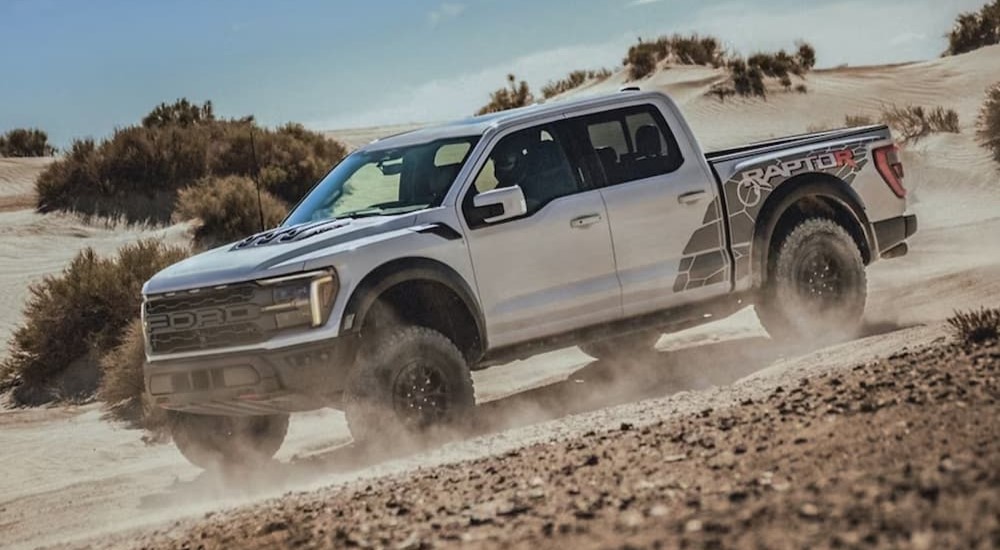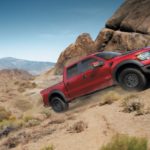There’s something to be said for relaxing, hitting the open road, and just going for a drive at night or early in the morning on the highway with few other vehicles around, just you and the pavement. But that’s not always the best way to unwind. Sometimes, you need to leave the road behind and hit the trail, going off-road to challenge yourself against everything the wilderness can throw at you—or to hit up a trail you’ve enjoyed countless times, shutting off your mind for a bit as you lose yourself in nature. Whatever the reason and wherever your next adventure takes you, having the right vehicle to get you there is crucial.
While an off-road SUV like the Jeep Wrangler or other similar options can be great, I’ve always preferred the power and design of a truck when hitting the trail. Off-road trucks might’ve once been a niche market, but these days, every major manufacturer has caught on to how popular these models are, and you’ve got an overwhelming number of options. While looking at the 2024 Chevy Silverado 1500 vs 2024 Ford F-150, I’ve been considering which option is better for going off-road—I can’t decide which one comes out on top. Let’s take a look at what each truck has to offer and see if we can navigate this trail together.
Overall Options: Silverado vs F-150
One of the first things worth considering is just how many options each of these trucks offers for heading off-road. In the past, you were lucky if a manufacturer made one off-road pickup—you were more likely to choose a truck with good general features and then make some aftermarket upgrades to it. These days, however, we’re fortunate enough to have multiple options we can enjoy, with Chevy and Ford offering more than one model for going off-road in their most popular full-size trucks. So, let’s take a look at each of them and what we can potentially choose from when looking at a pickup for the trail.
This is something that Chevy does incredibly well because they offer three different off-road options for the Silverado 1500, which gives us plenty of great trucks to choose from. First, they have two off-road variants of standard Silverado trims in the Custom Trail Boss and LT Trail Boss (off-road versions of the Custom and LT, respectively). These both come with a Z71 Off-Road Package featuring a special off-road suspension with a two-inch factory lift, standard four-wheel drive (4WD), frame-mounted red recovery hooks, and skid plates to protect their undersides. That’s a solid start with two off-road trucks at different price points.
Chevy also offers the ZR2 trim for the Silverado 1500, the cream of the crop for their off-road trucks. For starters, it comes standard with a ZR2 Suspension Package, a high-performance lifted suspension featuring Multimatic DSSV dampers, delivering some of the best trail maneuverability and travel on the market. It has driver-selectable full-locking front and rear differentials, standard 4WD (of course), strong skid plates, and a heavy-duty air filter to handle the extra dust and dirt found on the trail. Combined with its 18-inch wheels wrapped in Mud-Terrain Goodyear Wrangler Territory blackwall tires, the Silverado 1500 ZR2 is undeniably an off-road beast.
Ford comes up a little bit short in this regard since they have two main off-road models available, both as dedicated options rather than off-road variants of pre-existing trims. Personally, I like the way that Chevy does it with the two Trail Boss trims, but ultimately, your mileage may vary in this regard. The Tremor is the first off-road option for the F-150, and it’s a great choice thanks to off-road tuned front and rear suspensions with twin-tube dampers, plus 4WD, skid plates, and large all-terrain tires. There’s no denying that the Tremor is a great option, but it starts at a higher price than either of Chevy’s Trail Boss models.
The Raptor is Ford’s clear competitor for trucks like the Chevy Silverado 1500 ZR2, and it does a mighty fine job of it. Features like Fox Racing Shox with Live Valve Technology offer incredible performance and flexibility on the trail. You get standard 4WD here, of course, along with heavy-duty skid plates, 17-inch wheels wrapped in 34-inch all-terrain tires, and impressive tech features such as Trail 1-Pedal Drive that lets you focus on navigating tricky terrain while using just one pedal for acceleration and slowing. There is also a Raptor R model, which combines incredible trail capability with racetrack performance, but that belongs in a class of its own.
Off-Road Engines and Power
In many ways, a truck is only as good as its engine, which is just as true when driving around town as when you’re out on the trail. With the numerous off-road options available from Chevy, you can effectively get any of the four engines they offer on an off-road trim for the Silverado 1500, though some have restrictions. Overall, it simply depends on what you’re looking for.
The LT Trail Boss, for example, starts with the standard 2.7L TurboMax I-4 engine with 310 hp and 430 lb-ft of torque. Also available is a 5.3L V8 engine with 355 hp and 383 lb-ft of torque, or Chevy’s impressive 6.2L EcoTec3 V8 engine with 420 hp and 460 lb-ft of torque. Chevy also offers the LT Trail Boss with its Duramax Turbo Diesel engine that delivers 305 hp and a robust 495 lb-ft of torque. The Custom Trail Boss model doesn’t have the 6.2L V8 engine available; however, the ZR2 starts with it and only has diesel as an available option.
By comparison, Ford has much more limited engine options on their off-road trucks, though what’s there is still great. The F-150 Tremor comes with a 5.0L V8 engine, standard, with 400 hp and 410 lb-ft of torque, and an available 3.5L EcoBoost V6 engine with 400 hp and 510 lb-ft of torque. That’s far fewer options than the Trail Boss models from Chevy, but there’s no denying that the specs on Ford’s engines are excellent. The Raptor comes with a High Output version of the V6 engine that boosts performance up to 450 hp— this is the only option available on the Raptor (without going up to the Raptor R model, which adds about $30k to the price and nets a 5.2L High Output V8 engine with 700 hp and 640 lb-ft of torque). Still, you could argue that it’s all you need.
The biggest issue is the complete lack of a diesel option for an off-road version of the Ford F-150. However, this isn’t isolated to off-road trims, as Ford has completely abandoned diesel engines on their best-selling light-duty models. These days, you’ll only find diesel options on their Super Duty trucks— not a problem for everyone, to be sure. Still, it’s worth considering since diesel engines are well known for excellent low-speed performance, long-term reliability, and the power to push through any obstacle.
Is There a Clear Winner?
There’s a simple answer to that question: no. The Chevy Silverado 1500 and Ford F-150 offer incredible power and capability for drivers looking to abandon the vestiges of civilization and leave the pavement behind. Someone with an unlimited budget interested in an absolute top-of-the-line off-road truck will find a lot to like about the Raptor and the Raptor R; honestly, though, the Raptor R is the kind of overkill that most of us simply don’t need. The options that Chevy creates by having three off-road trucks, with as many as four engines available on one of them, are hard to beat. It gives them the advantage over Ford for those of us who want to customize our pickups and get just what we want. Chevy is also the clear winner for anyone who prefers a diesel engine, which shouldn’t be overlooked for off-roading. Ultimately, they’re both amazing options, and the choice for most drivers will come down to what they’re specifically looking for.






